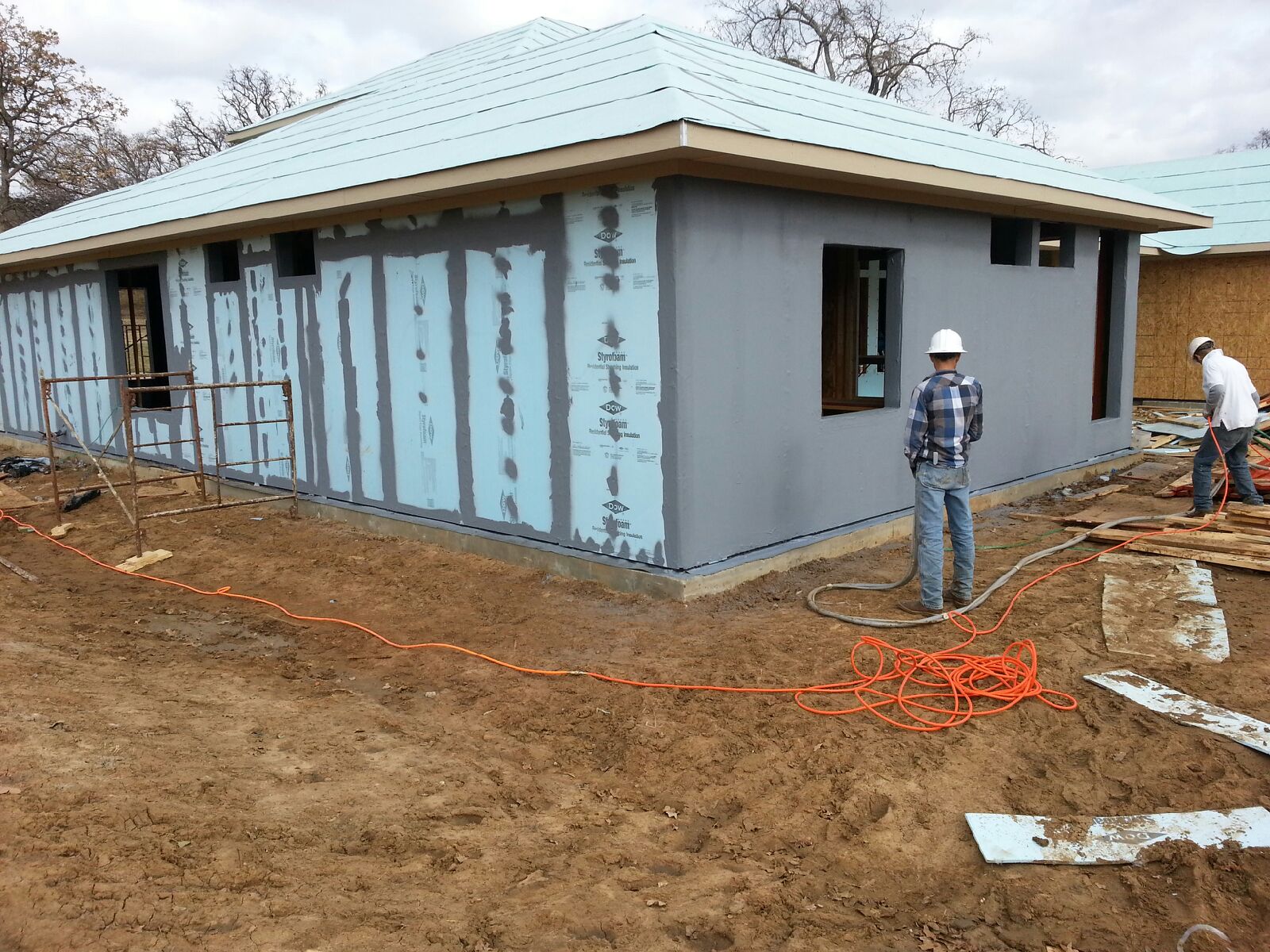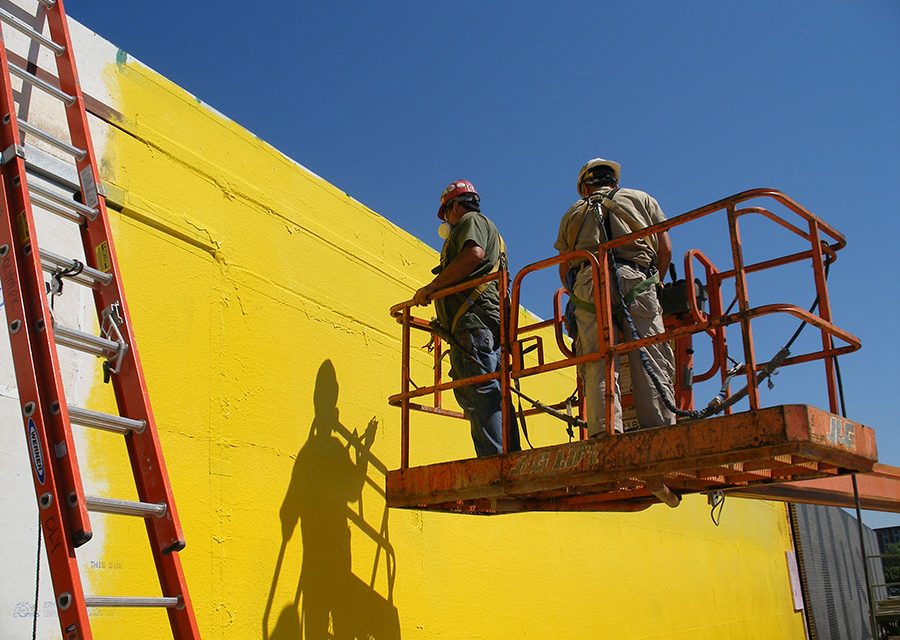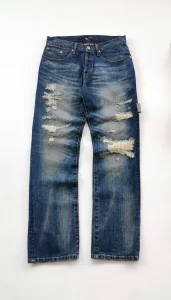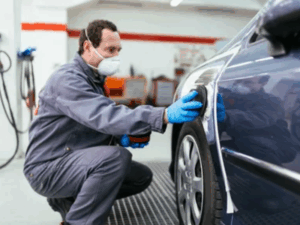When choosing between fluid-applied barriers and spray wraps, durability is often a top priority. The decision boils down to the specific requirements of the building, the environmental conditions, and the desired performance of the insulation system. While both options offer protection against air and moisture infiltration, they differ in terms of material properties, longevity, and ease of application.
Fluid-applied barriers are generally more durable than spray wraps. They create a seamless, monolithic layer that adheres directly to building surfaces. This eliminates joints and reduces vulnerability to wind uplift and water intrusion. Spray wraps, although quicker to install, are more prone to seam failure and mechanical damage over time.
This article breaks down how these systems compare in real-world performance, installation, and long-term reliability, providing a data-backed view to inform building professionals and property owners.
Fluid-Applied Barriers vs Spray Wraps A Comparison
Fluid-applied barriers and spray wraps serve the same function but differ fundamentally in structure and application.
- Fluid-Applied Barriers: Applied as a liquid via spray, brush, or roller. Once cured, they form a continuous membrane over walls and joints.
- Spray Wraps: Installed as sheet goods with seams that require taping or sealing, offering water-resistive and air barrier functions.
Durability Comparison Table
| Feature | Fluid-Applied Barriers | Spray Wraps |
| Lifespan | Typically 20–30 years | Around 10–20 years |
| Weather Resistance | High resistance to UV, wind, and water | Moderate to high resistance depending on material |
| Ease of Maintenance | Minimal, typically requires re-coating every 10–15 years | Regular checks and maintenance needed |
| Installation Time | Longer due to drying and curing times | Faster, but requires precise application |
| Seamless Coverage | Yes, no seams or joints | Joints and seams may require sealing |
| Vulnerability to Damage | Can be damaged by physical impacts | May tear or shift in extreme weather conditions |
| Flexibility | High, conforms well to irregular surfaces | Less flexible, more rigid once applied |
| Resistance to Moisture | Excellent, creates a watertight seal | Good, but vulnerable to moisture if seams fail |
Technical Specifications
| Specification | Fluid-Applied Barriers | Spray Wraps |
| Thickness | 20 mils to 60 mils | Typically 30 mils to 100 mils |
| Application Method | Spray or roll-on | Spray or adhesive-backed sheets |
| Drying/Curing Time | 4–24 hours depending on conditions | Instant upon application |
| Temperature Resistance | Typically up to 200°F (93°C) | Varies, usually up to 180°F (82°C) |
| Vapor Permeability | Low, vapor barrier | Depends on material, can vary |
| Cost per Square Foot | $1.50 – $5.00 | $2.00 – $7.00 |

Things to Consider Before Making a Decision
Surface Complexity
- Fluid-applied barriers excel on irregular substrates or penetrated walls.
- Spray wraps perform better on large, flat surfaces with few obstructions.
Climate and Environmental Exposure
- In areas exposed to wind-driven rain, hurricanes, or high UV, fluid-applied membranes offer superior protection.
- Spray wraps may suffice in dry, temperate climates with minimal thermal cycling.
Project Timeline
- Fluid-applied systems require curing time (up to 24 hours depending on humidity).
- Spray wraps are quicker to install, reducing labor costs on tight schedules.
Long-Term Investment
- Though fluid-applied barriers have higher upfront costs, they reduce maintenance and reinstallation over time.
- Spray wraps may need re-taping, patching, or partial replacements due to seam breakdown or tears.
Maintenance Access
- Spray wraps need regular visual inspections to detect seam issues.
- Fluid-applied systems typically require only spot repairs or re-coating after 10–15 years.
Bonus Tips
- Proper Surface Preparation: Ensure the substrate is clean and dry. Poor prep undermines both systems.
- Manufacturer Compatibility: Do not mix barrier types unless approved by both manufacturers.
- Joint Detailing: Pay extra attention to window openings, corners, and wall penetrations—these are common failure points for both methods.

Common Questions
What is the main difference between fluid-applied barriers and spray wraps?
Fluid-applied systems form a seamless, liquid-applied membrane. Spray wraps are pre-formed sheets that rely on mechanical attachment and taped seams.
Are fluid-applied barriers more expensive than spray wraps?
Yes, fluid-applied systems tend to cost more upfront but may reduce lifetime costs due to lower maintenance and longer service life.
How do fluid-applied barriers perform in extreme weather?
They excel in extreme conditions. Their seamless structure resists air infiltration, water penetration, and UV degradation better than sheet-based systems.
Can spray wraps be used in place of fluid-applied barriers?
Spray wraps can work in less demanding environments, but they are generally less robust in the face of long-term moisture exposure or mechanical stress.
How long do fluid-applied barriers last compared to spray wraps?
- Fluid-applied: 20–30 years
- Spray wraps: 10–20 years, depending on exposure and material quality
Make the Right Decision
Fluid-applied barriers provide a higher level of durability, especially in areas with complex geometries or challenging weather. Spray wraps offer ease of use and faster installation but may require more attention to detail and ongoing maintenance. The right system depends on project-specific factors including surface complexity, environmental stress, and lifecycle cost expectations.
Are Fluid-Applied Barriers More Durable Than Spray Wraps FAQ
Can fluid-applied barriers be applied in cold weather?
Yes, but extended curing time is needed. Always verify product-specific temperature ranges before application.
Do spray wraps require mechanical fasteners?
Most do, especially over sheathing. Fasteners prevent slippage or billowing under pressure loads.
Are fluid-applied barriers environmentally safe?
Many meet LEED or GreenGuard certification standards for low-VOC content. Always check safety data sheets and third-party certifications.
How often should spray wraps be inspected?
Every 1–2 years. Focus on penetrations, tape seams, and junctions with dissimilar materials.
Can fluid-applied barriers be patched or repaired?
Yes. Damaged sections can be cleaned and recoated without replacing the entire membrane.





